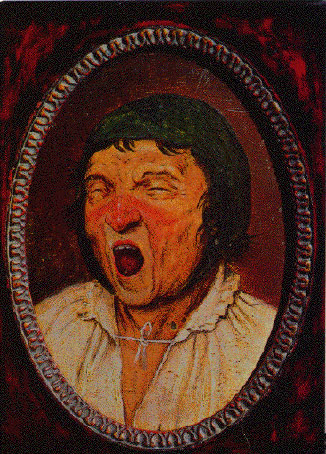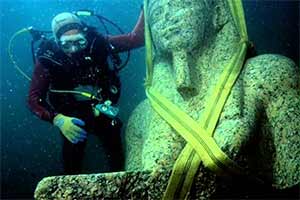Brueghel, Flemish art masterpeices and Brughel’s syndrome
Francesco Carelli, University of Milan, Rome
 The exhibition “Brueghel. Flemish art masterpieces”, in Bologna (Italy), covers the story throughout a time, familial, pictorial horizon of more than 150 years, showing in Palazzo Albergati the masterpieces of an exceptionally talented whole dynasty, living and working between XVI and XVII century.
The exhibition “Brueghel. Flemish art masterpieces”, in Bologna (Italy), covers the story throughout a time, familial, pictorial horizon of more than 150 years, showing in Palazzo Albergati the masterpieces of an exceptionally talented whole dynasty, living and working between XVI and XVII century.
Brueghel, the name of a family become in past centuries a mark of excellence in pictorial art, included the most important group of Flemish artists between XVI and XVII centuries, interpreters of the splendour of XVII century. The family amazing the world with paintings arrived to us thanks to their preciousness, well known since XVII century, is on exhibition with works by Pieter Brueghel the Elder – Resurrection (about 1563) – Pieter Brueghel the Younger – Marriage Dance in open air (about 1610) – Jan Brueghel the Elder – River landscape with bathers (1595-1600) – Jan Brueghel the Younger – Travellers’ encounter (about 1630) – Abraham Brueghel – Great still-life with fruits in a landscape (1670) – Ambrosious Brueghel – Still life with flowers (1660-65) in a display that analyse realistic revolution on European painting born by Brueghel family’s genius, affecting, by the same inventors’ view, the great themes of Western Art History.
The Exhibition
The exhibition wants to be a fascinating travel in the Golden Age of Flemish Paintings
of XVII century, in search for the visionary genius of as many as five generations of artists able to embody at one, like a choir – as nobody before nor after them – the style and trends of more than a century of history of art. While Italian Renaissance focuses attention on human figure’s noble and virtuous ideal and through the experiences of Michelangelo, Leonardo and Tiziano enhances its greatness and virtues, in Flanders the perspective radically changes.
Pieter Brueghel the Elder, the family’s ancestor who knows well and appreciate italian painting, addresses himself to the daily human life reality, investigates all its aspects without exclusion for the most crude and realistic ones, dwells on peasants’ and merchants’ shadows and vices , on living labour, but also on people’s cheeriness, often coarse and rough. Merciless gaze directd on life it actually goes on, o charitable actions, but also on failings and daily miseries concerning all the people.
And if in Italian Renaissance, Nature is restricted to be the background for the magnificent plastic and aesthetic superiority of man, in Flemish painting – in Brueghel’s style – Nature fully takes on the role of the true protagonist of human history and is presented with a visual wealth, attention to details and compositional beauty never seen before in Painting History.
Strong and vigorous Nature overcoming man, often dominated and submitted by its might. Pieter Brueghel the Elder, and all his rich progeny after him, is the inventor of a pictorial code soon become a mark, a sort of brand of the articulate family that since the middle of XVI century will be active for more than two centuries.
Brueghel ‘s gaze settles on simple humanity, free but at the same time slave of its needs, continuously moving between spiritual trends to virtues and vicious carnal seductions. With these works a path of new reality perception begins , and astonishment and sense of human limit arise in front of the power of elements of a threatening but fascinating word. The Brueghel are tellers of facts and stories. In their works there is the telling of true life, there are peasants bent by living fatigue, drunks, beggars, individuals represented only from behind, anonymous characters going on their way of existence, being unaware and indifferent to the by standing observer looking at the painting.
And one of these very realistic characters, painted by Peter Brueghel the Elder in the action of yawning widely, in the work named De Gaper, was taken by the English neurologist David Marsden as the paradigm of Brueghel’s Syndrome, in a medical article issued in 1976 about blepharospasm and oromandibular dystonia.
About Brueghel’s syndrome
Marsden, in the title of his 1976 article on the subject, actually defined blepharospasm-oromandibular dystonia syndrome as “Brueghel’s syndrome” and he did, in fact, use the possessive eponym. But before him, in 1910, Henri Meige, a French neurologist, described approximately ten patients with involuntary closure of the eyelids. Blepharospasm was associated with involuntary contractions of the jaw muscles in only one of these patients. And over 60 years later, an American neurologist, George Paulson, reported three patients with blepharospasm and oromandibular dystonia and emphasized the probability of a common pathophysiological basis .
The terms “Meige’s syndrome” and “Meige syndrome” are often used by neurologists and other clinicians to describe the combination of blepharospasm and involuntary movements of the lower facial and/or masticatory (jaw) muscles. Application of “Meige’s syndrome” and other eponyms to the various forms of dystonia is problematic for a multitude of reasons. First of all, Meige, a physician, did not suffer from the syndrome that bears his name. Along this line, the possessive form of eponyms has been discouraged by the Council of Science Editors [1] and the father of Online Mendelian Inheritance in Man®, the late Dr. Victor McKusick [2]. Second, Meige was not the first person to describe the combination of blepharospasm and dystonia of other cranial muscles [3]. Lastly, “Meige’s” or “Meige syndrome” could be confused with Meigs syndrome which is defined as the triad of a benign ovarian tumor, ascites and hydrothorax .
On the other side, Brueg(h)el the Elder was not a physician and his painting of a yawning subject has nothing to do with dystonia. Pieter Brueghel the Elder dropped the ‘h’ from his name in 1559, one year after painting the De Gaper . Brueghel the Younger was also a painter, further confounding historically exact usage of this eponym. Dr. Gordon Gilbert, suggested that the essential sign of “Brueghel syndrome” is “a widely and dystonically opened jaw ” In reality, however, jaw-opening dystonia may occur in the setting of segmental, multifocal or generalized dystonia and may be associated with blepharospasm; application of “Brueughel syndrome” to these cases would be unnecessarily complicated and confusing.
In conclusion, the eponymic terms Meige syndrome and Brueghel syndrome are imprecise, have been used inconsistently for decades, and should be avoided in the classification of craniocervical dystonia. The term segmental craniocervical dystonia faithfully incorporates various blepharospasm-plus subphenotypes which appear to share common genetic and physiological underpinnings. Confident identification of genetic and environmental risk factors for segmental craniocervical dystonia may permit the developmental of better treatments which target pathways of cellular dysfunction within the central nervous system.



